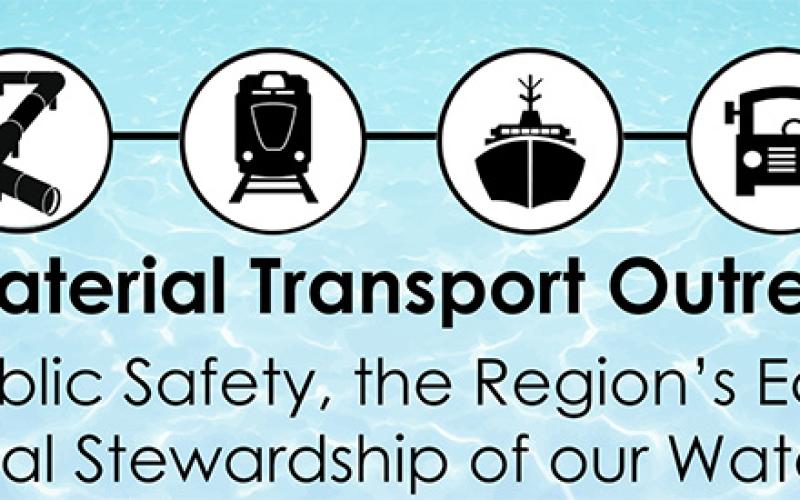
Learn About Hazardous Material Transport in the Lake Champlain/Great Lakes Region
The train derailment in early February in East Palestine, Ohio, caused explosive fire and release of toxic chemicals, threatens environmental and human health, and is downright frightening for people living in the area. And, it has many others on edge, as most of us know very little about hazardous material transported through our towns and cities and along our lakes and rivers.
Did you know that crude oil is moved from Montreal by rail along the New York shoreline of Lake Champlain and along the Hudson River to Albany?
Most crude oil is transported by pipeline through the Great Lakes and St. Lawrence River region from sources in the United States and Canada, including the Bakken oil fields of North Dakota and the Alberta tar sands. With increased production from these regions, transportation by rail and truck is common.
Crude oil transportation provides important energy resources and economic opportunities for the United States and Canada. However, increased safety concerns related to these transportation modes, alongside aging and inadequate infrastructure, present a risk to critical watersheds in the northern United States and in Canada.
HazMaTON, a team of specialists from the Great Lakes, Lake Champlain, Hudson River, and St. Lawrence River regions, works to provide information focused on reducing risks related to multiple modes of oil and hazardous material transport.
“Transportation of dangerous material such as crude oil is not something people think about on a regular basis—and rightfully so,” said Aude Lochet, Lake Champlain Sea Grant representative to the HazMaTON group and Water Resources Extension Specialist at SUNY Plattsburgh. “However, being aware of the risks and response plans in place can make a difference in case of an emergency. One of HazMaTON’s goals is to help build this awareness.”
HazMaTON

Since 2014, HazMaTON or the Hazardous Material Transport Outreach Network, formerly the Great Lakes Crude Oil Transport Team, has coordinated educational resources and events to inform the public about hazardous material transport. The HazMaTON team disseminates accurate, neutral, and data-driven information through education, outreach, and relationship building in order to improve public awareness and safety, the region’s economy, and the environmental stewardship of our water resources.
The Network includes 23 members who are representatives from the Great Lakes Sea Grant Network, which includes Lake Champlain Sea Grant; Lake Champlain Basin Program; International Association for Great Lakes Research; International Joint Commission, a partnership of the United States and Canada; National Oceanic and Atmospheric Administration; University of Buffalo; U.S. Coast Guard; and U.S. Department of Transportation’s Maritime Administration.
“Our members have a breadth of expertise and skills and are physically located near some of the greatest freshwater resources on our planet,” said Kelsey Prihoda, HazMaTON coordinator and Great Lakes Sea Grant Transportation Extension Educator at Minnesota Sea Grant. “We are very well positioned to work with emergency managers, regulators, scientists, and local interests in our communities.”
One of HazMaTON’s priorities is to help emergency managers who would like residents, business owners, and other interests to learn more about their work ahead of a major response event, like the train derailment in Ohio. The Network also works to connect policymakers with scientists to help fill critical knowledge gaps through research and to ensure that results from scientific research can be applied by emergency responders and regulators.
Learn More
The HazMaTON team produces a quarterly newsletter and hosts a monthly webinar series each June through September. The webinars feature current scientific research, timely information, and various perspectives on hazardous material transportation.
If you are interested in information related to crude oil and hazardous material transport in the Lake Champlain, St. Lawrence River, Hudson River, and Great Lakes regions, you can glslcrudeoiltransport+subscribe [at] g-groups.wisc.edu (send an email and request that you be added to the HazMaTON email listserv).
Learn more on the HazMaTON website.